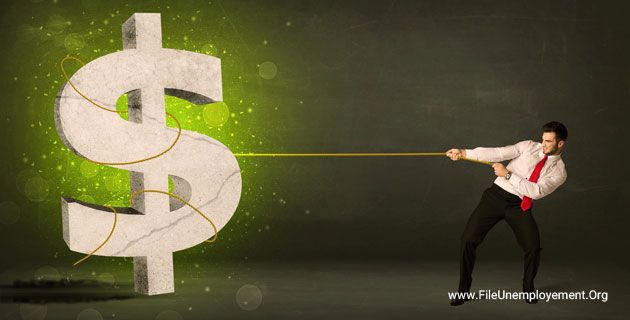A nation’s economy is its backbone, having an immediate as well as a lasting impact on pretty much every single citizen. The need to want the country’s economy to grow and flourish – to want the currency to hold its position globally, to keep import and export healthy and financially viable, to strive for employment for all and to have a yearly budget that looks after the needs of all, amongst many other things, are essential to the sustainable existence of generations to come.
From affecting the savings of every family to budgets of the largest charities, workers keeping the jobs they have to the unemployed and economically backward having an easier time finding work, and even retirement savings and insurance – a strong economy can make all the difference.
What is it that makes a nation’s economy develop and grow? Understanding that isn’t about having a degree in micro-economics or being a math wizard – all you need is to comprehend how economics works into daily life and burst the myths that are commonly believed.
One of the most common flaws in understanding the economy of a state is looking at it as one static whole, which can be divided into parts of various sizes, where in the differences in size creates the economic hierarchy. This analogy functions much like cutting a cake for all the guests at dinner, but the economy doesn’t quite work that way. Firstly, the whole is a not a static constant, instead, it can be made to increase by us creating wealth, and shrink in size if there erroneous decisions made. While the size of the part each individual gets depends on the wealth they create, it is possible to assure a larger part for each citizen as compared to what they would have gotten before.
The 2008 Crisis
The importance of a growing economy is most easily proven when we look back at the crisis in 2008, marked by the fact that the consumption rate in the United States of America in 2007 and 2008 was much larger than its GDP – the Gross Domestic Product. The GDP measures a nation’s economic prowess and performance.
The subprime mortgage crisis marked the beginning of the recession in the US, caused by a sudden drop in housing prices which couldn’t be made up for due to foreclosures and mortgage wrongdoings not having value anymore. Between 2000 and 2004, loans were granted without any problem at all, and the façade of a high demand was kept up – causing the prices of houses to remain high even though they should have technically dropped. When the tables turned in 2007, prices dropped but the money had already been invested, pushing the banks into a state of economic emergency.
While the cause of this crisis has been attributed to various flaws in government and housing policies, financial institutions, regulations, consumers and credit agencies, the primary concern did arise when subprime mortgages and loans allowed for fervent investment in homes without a worry of repayment in the near future.
The recession had a gross effect on the stock market, housing prices and employment status across the entire continent – each falling by 50%, 30% and 6% (9 million workers lost their jobs) respectively. Though the stock market got back up in approximately five years, the widespread unemployment and low housing prices remained.
Keeping the economy at its best and constantly growing for years to come is essential for our lives and that of the future generations.
While there is much debate about how that can truly be achieved, here are 5 ways which illustrate steps towards economic growth.
Keeping Manufacturing Units in the Country
From cheap labor abroad to the lack of tax incentives within the US, manufacturers have relocated to other parts of the world in startling numbers. This outsourcing of production and manufacturing is a game changer when it comes to the lack of good employment opportunities for residents. What is more, the manufacturing unit takes with its facilities and profits, making the rate of investment back in the country significantly less.
That has to change – manufacturers keeping their holdings in the country and forming a bond with the government with tax reforms can generate job opportunities for millions, whilst allowing for the investment of profits in other companies and consequently increasing the economic structures further. Companies should be allowed to get back their overseas profits at moderated rates, as long as a part of a sum is invested back into the boost of workforces and increased manufacturing scope and capacity.
Free and Fair Trade
A very small percentage of American companies export, even though approximately 95% of the world’s consumer base is in countries outside of the US. Policies incorporating trade and export as a way to build financial strength can make a large difference not only to the economy of the US but to the other nations we trade with as well.
Global competitiveness, relationships with other nations through import and export, and exchange of both tangible and intangible products and skill can be a crucial player when it comes to economic forte, but the first step lies in the hands of the policy makers.
The Strength of Innovators and Entrepreneurs
For a country’s economy to flourish, it must call for new and fresh ways to build upon each of its industries and sectors – giving investors a reason to look their way and keep the demand-supply relationship with consumers alive and thriving.
For a country which has grown year after year because of its groundbreaking and state of the art ideas, industries and businesses, it is essential for new blood to be allowed to innovate, compete, take risks and develop new launch pads for the next generations. If the economy does not continue to forge new bonds with entrepreneurs, a time will come when the major wealth makers of the country will either reach stagnancy, or the monetary funds will pool up into pockets.
Crowdfunding; Bringing the Nation Together
From the time of the crisis in 2008, start-ups both big and small have had a hard time getting hold of investors and capital to get the ball rolling on their ideas.
A solution that has off-late led to a very functional way to tackle this issue is Crowdfunding, where in individuals can contribute small sums or money towards an entrepreneur or innovation they believe in, allowing it to grow with the support of numerous people. Breaking notions of distance and monetary strength as necessities to become an investor or entrepreneur, crowdfunding fundamentally democratizes the concept of investment and keeps the creation of wealth going even in times of recessions.
Bridging the Gap Between Economic Growth and the Environment
Last but definitely not the least, economic growth is often used as an argument to hold back on environmental laws and policies – constantly stating that it is either one or the other than can be strengthened at a time.
At a time like today, when the need to save and be efficient is a matter of life and death, the assumption that both economy and environmental strength cannot coexist is flawed. Economic strength itself boils down to the individuals in society, their livelihoods at present and the sustainability of the financial and social model for generations to come. When the environmental deterioration is left out of the discourse, long-term arguments fall flat.
For the economy of a country to strengthen and grow, sustainable sources of energy, environment-friendly infrastructure, innovation to cut down carbon emissions, and regard for careful and efficient waste management have to be worked into the system itself, instead of being postponed or looked at as hazardous to the economic boost.

